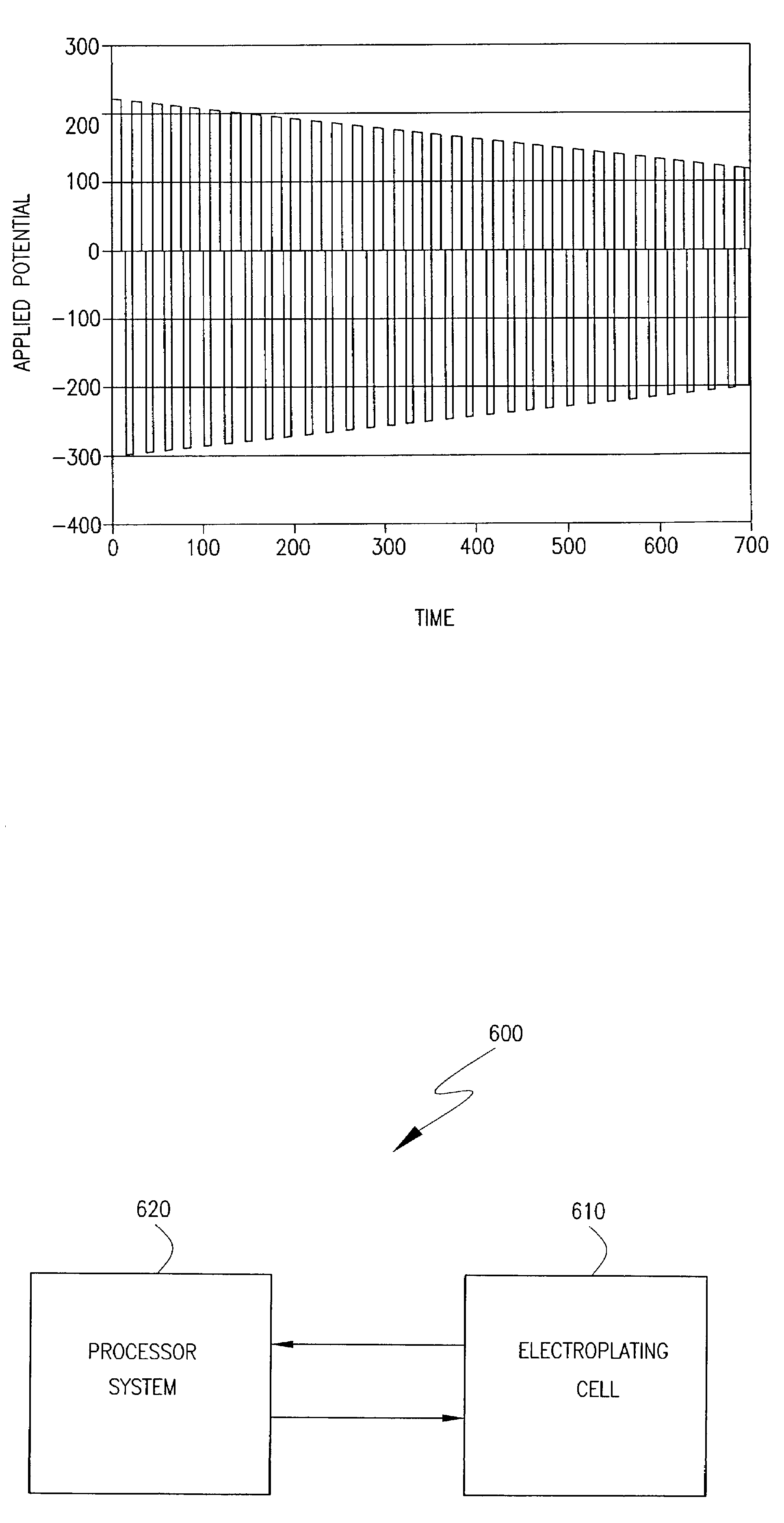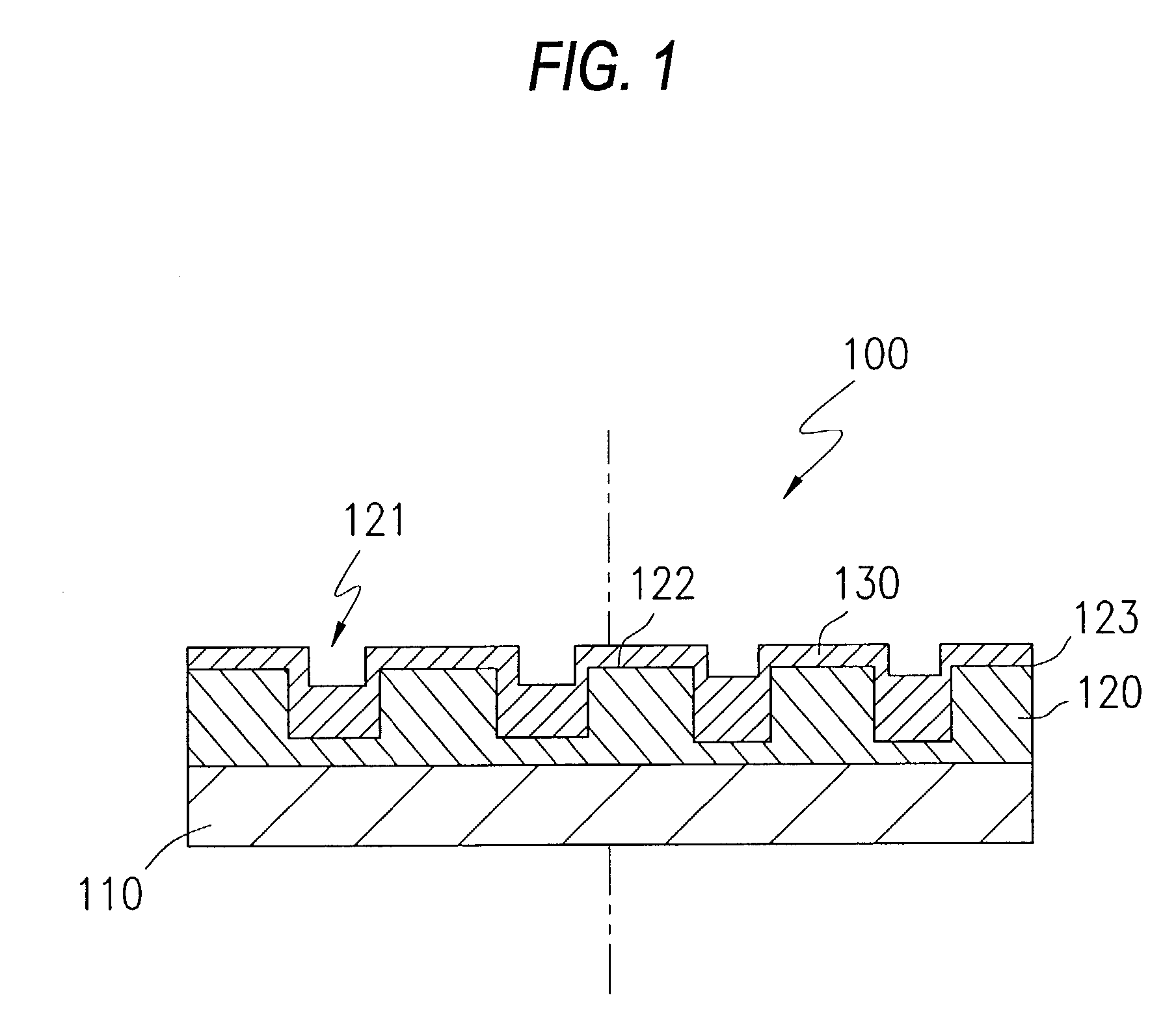Systems for electroplating metal onto a layer of low conductivity material
- Summary
- Abstract
- Description
- Claims
- Application Information
AI Technical Summary
Benefits of technology
Problems solved by technology
Method used
Image
Examples
Embodiment Construction
[0024]The present invention will be understood from the exemplary embodiments described herein.
[0025]The present invention relates to a method of electroplating metal onto a layer of low conductivity material. The method is particularly useful for the filling of structures in the center surface of the low conductivity layer without overdepositing on the outside edge, thus ensuring a controlled profile from deposition of the material across the entire surface of the low conductivity layer. The method provides a structure, such as for example, a semiconductor wafer or a chip produced therefrom, comprising a substrate, a low conductivity layer, and a uniform layer of electroplated metal deposited on the low conductivity layer.
[0026]FIG. 1 is a partial cross-sectional view of a semiconductor wafer 100 having a substrate 110 and a metal layer 130 deposited on a low conductivity layer 120 in accordance with the present invention. The low conductivity layer 120 may be barrier layer, such a...
PUM
| Property | Measurement | Unit |
|---|---|---|
| Electric potential / voltage | aaaaa | aaaaa |
| Electric potential / voltage | aaaaa | aaaaa |
| Frequency | aaaaa | aaaaa |
Abstract
Description
Claims
Application Information
 Login to View More
Login to View More - R&D
- Intellectual Property
- Life Sciences
- Materials
- Tech Scout
- Unparalleled Data Quality
- Higher Quality Content
- 60% Fewer Hallucinations
Browse by: Latest US Patents, China's latest patents, Technical Efficacy Thesaurus, Application Domain, Technology Topic, Popular Technical Reports.
© 2025 PatSnap. All rights reserved.Legal|Privacy policy|Modern Slavery Act Transparency Statement|Sitemap|About US| Contact US: help@patsnap.com



